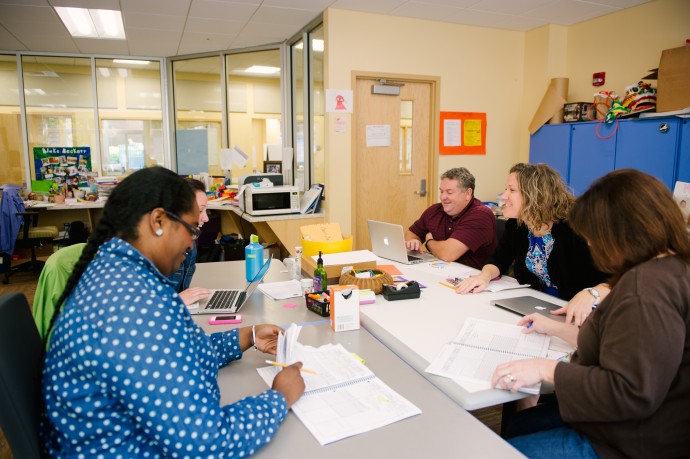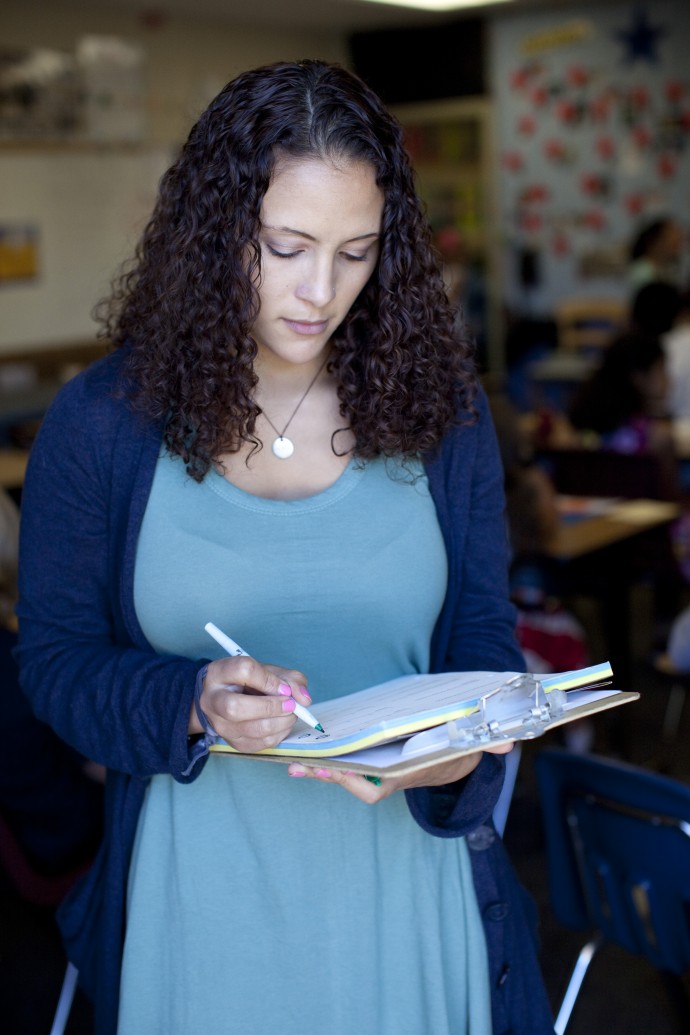The first several days of our pre-service week were spent building relationships and becoming a learning community. The administrative team asked new staff members to fill out a sheet of paper prior to the first day of pre-service week that would help us get to know them. Staff members were asked to share about things that were important to them: family, friends, things they love to do, one of their best experiences teaching, and their favorite sports teams. The administrative team read these to the staff as the hosts of the “meet and greet” show before having the staff meet and greet each other, reconnecting through fun questions and getting in pairs, then quads, and then eights.

Establishing personal connections is critical to healthy relationships. There are many articles that refer to ensuring there is reciprocal communication for healthy relationships. Some articles share this as consultation and others share this as shared decision-making. All agree that reciprocal communication is a back and forth of sharing between two people in which one person gives and then the other person gives. Through this type of communication you get to know each other’s similarities and differences. As I shared in another blog, we have to know each other personally and professionally. People want to know that not only do you care about their professional success, but that you also care about their overall well-being. Please see the list of resources at the end of this blog to learn more about how reciprocal communication impacts staff motivation and willingness to work together, not only with you, but with other staff members.
We also reestablished the expectations for our professional learning communities (PLCs). These first steps were done collaboratively by the leadership team. We had several questions to answer before planning this PD session: Where was the staff in their understanding and development of PLCs? What were the most important foundational steps to getting grade levels started? What expectations had to be clear? Who needed to do what? What resources were we going to use this year? What had the district used to introduce the schools to PLCs? What could we realistically share with enough depth in the timeframe in which we had to facilitate?
The district introduced PLCs using the Dufours’ model in their book Learning by Doing. Therefore, we decided to revisit Dufours’ work along with some resources that other districts had used to develop PLCs in schools. We found several resources in the Dufours’ book and in this article from ASCD, which describes the PLC cycle to help ensure effective PLCs. In Dufours’ book they discuss the importance of having clear expectations and a common definition. We decided this was important, but we also had to connect it to reaching our goals on our school improvement plan and to student success. To do this, we created a common definition of what a PLC is and why it is important to the success of our students. The team decided we should give teachers Dufours’ definition of an effective PLC and also the cycle of a PLC, but we would ask them to add or adjust if they saw it was needed. The team of teachers shared that this would help each grade-level team not only know the expectations, but how the cycle supports growth for students. Through this process the teachers will become more effective in their role as facilitators of learning. It will help them to see beyond “I taught it” to “The students can apply their learning.”

What was my role? What were the roles of the teachers on the leadership team? We had to decide how to facilitate this session. Therefore, before we could move into creating a definition, I had to set the stage on why PLCs were the vehicle for our work this school year. We looked at our school improvement plan and the action steps. I asked the teachers to identify each action step that required them to work together as a team. I purposefully did this because I wanted them to see that every step required some form of collaboration. Teachers quickly came to this realization. Then, they made a list of words about what effective collaboration looks, sounds, and feels like. How do you know you are being productive? Then we provided a common definition from the book, Learning by Doing. We asked them to look at their list and this definition and define how they were going to work together as team this year.
Then we clarified the cycle of an effective PLC and their options when they were in their PLCs. We used an article from ASCD to create our PLC cycle, which included:
- The use of data to determine student and educator learning needs;
- Identification of shared goals for student and educator learning (vision, school learning plan, objectives)
- Professional learning to extend educators’ knowledge of the following: content, content-specific pedagogy, how students learn, assessment, and management of classroom environments;
- Selection and implementation of appropriate evidence-based strategies to achieve student and educator learning goals;
- Application of the learning with local support at the work site (peer learning walks, lesson study, action research);
- Use of evidence to monitor and refine implementation; and
- Evaluation of results.
The teachers were able to add to the list of options the leadership team created such as unpacking the standards, analyzing student work and its implications for instruction and feedback, and lesson study. This was helpful because we wanted the staff to feel ownership of this process. PLCs are about empowering the learners so we did not want to just give only certain options. After they added to the list, the grade-level teams decided on two main learning focuses for their PLCs. We asked the grade-level teams: What are two options you think would help you meet our school improvement goals? What are two options you think you need as a grade level to support you meeting your grade-level goals?
Please take a moment and ask yourself: Do you have effective PLCs in your school? How will effective PLCs help your school meet its goals? Do you have a common definition and practices? What is your next action step? What is your evidence that this needs to be your next step?
In my next blog, I will go into more detail about the steps we took to continue to establish professional learning communities and the pitfalls we have run into during the first 9 weeks of school. We all know as effective leaders we must consistently support our focus areas. We are the mirrors so the areas we emphasize through communication and visibility set our expectations.
Resources:
- Communicating and Consulting with Your Team
- Internal Communications: It’s Not Rocket Science
- What Are Professional Learning Communities?
- Great Schools Partnership: the Glossary of Education Reform
- Educational Leadership: What Is a Professional Learning Community?
- Building Good Work Relationships: Making Work Enjoyable and Productive
